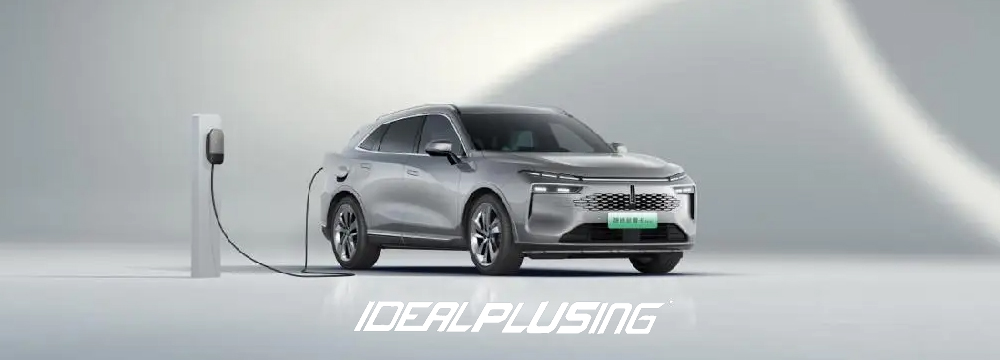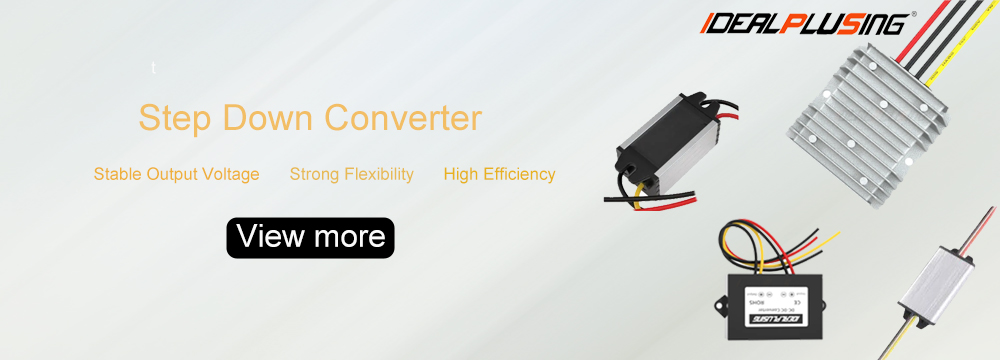As a core component in the power supply system of new energy vehicles, the on-board DC/DC converter plays an indispensable role. It is responsible for converting high-voltage DC power into low-voltage DC power suitable for vehicle use, thereby ensuring stable power supply and efficient energy conversion of new energy vehicles.
The on-board DC/DC converter plays a pivotal role in new energy vehicles. Its core task is to accurately convert the high-voltage DC power generated by the power battery into the low-voltage DC power required by various electronic components and control systems of the vehicle. This process involves multiple key modules such as power conversion and drive control, which jointly ensure the efficiency and safety of power conversion.
In the field of new energy vehicles, DC/DC converters have multiple functions. It not only provides the necessary power for auxiliary equipment such as power steering systems and air conditioners to maintain the stable operation of the vehicle, but also is responsible for charging low-voltage batteries to ensure continuous power support for electronic components and control systems. In some advanced systems, DC/DC converters have even replaced traditional 12V generators and become the main source of power replenishment for high-voltage battery systems and 12V power loads.
There are many types of on-board DC/DC converters, including boost, buck, and buck-boost. The choice of which type of converter should be determined according to actual needs and vehicle characteristics. When selecting, factors such as the vehicle's maximum speed, 100km/h acceleration, weight, maximum torque, and power status will be comprehensively considered to ensure that the power of the DC/DC converter matches the vehicle's needs.
It is worth mentioning that with the continuous advancement of new energy vehicle technology, on-board DC/DC converters are also continuously improving. Looking to the future, with the improvement of system voltage levels and the widespread popularity of 48V systems, the position of DC/DC converters in new energy vehicles will become more indispensable, providing vehicles with more reliable and efficient power guarantees.
Main indicators of on-board DC/DC converters
On-board DC/DC converters are key components in new energy vehicles, and their performance indicators directly affect the vehicle's power system and overall operation. The main indicators include the converter's input voltage range, output voltage accuracy, conversion efficiency, and reliability. The reasonable setting and optimization of these indicators are crucial to ensuring the stability and efficiency of the vehicle's power system.
Detailed explanation of the main indicators of vehicle-mounted DC/DC converters

The performance of vehicle-mounted DC/DC converters is not only affected by a variety of key parameters and characteristics, but also closely related to the stability and reliability of the vehicle's power system. The following is a detailed analysis of these core indicators:
First, the output current capability is an important indicator for evaluating the performance of vehicle-mounted DC/DC converters. It determines whether the converter can effectively meet the power requirements of the automotive electronic system. During the selection process, it is important to ensure that the output current capability of the selected converter is strong enough to cope with various load conditions.
Second, the conversion efficiency is directly related to energy utilization and system energy efficiency. High efficiency means less energy waste, which is crucial to improving the overall energy efficiency of automotive electronic systems. Therefore, when selecting, products with high conversion efficiency should be given priority.
In addition, the power level is also an indicator that cannot be ignored. It determines the scale of electrical energy that the converter can handle and needs to be selected according to the vehicle configuration and actual needs.
At the same time, considering the limited space inside electric vehicles, the size and weight of the DC/DC converter have also become important considerations. Smaller size and lighter weight are conducive to saving space and optimizing layout of the entire vehicle.
In addition, heat dissipation performance is crucial to the stability of the converter. In a high temperature environment, excellent heat dissipation performance can ensure the normal operation of the converter and avoid damage caused by overheating. Therefore, when choosing, you need to pay attention to its heat dissipation method and effect.
In addition, electrical safety performance is also an aspect that cannot be ignored. It covers the compliance of input and output leads, grounding resistance requirements, and electrical clearance and creepage distance regulations, which are all important conditions to ensure the safe operation of the converter.
Finally, electromagnetic compatibility is equally important. It requires that the electromagnetic interference generated by the on-board DC/DC converter during operation is controlled within the specified range and has a certain anti-interference ability to ensure the stability and reliability of the vehicle's power system.

Reliability:
This is an indispensable indicator for evaluating the performance of on-board DC/DC converters. It measures the stability and durability of the converter during continuous use. Converters with high reliability can effectively reduce the probability of failure and thus improve the performance of the entire vehicle.
On-board DC/DC converter topology
The topology of the on-board DC/DC converter, that is, its circuit design, is one of the key factors affecting its performance and reliability. Reasonable topology design can ensure that the converter remains stable under various working conditions, thereby improving its overall performance.
Detailed explanation of the topology of automotive DC/DC converters
The topology of automotive DC/DC converters, that is, its circuit design, has a profound impact on its performance and reliability. This structure not only determines the path and method of power conversion, but also directly affects the efficiency, reliability and cost of the converter. The following are several common automotive DC/DC converter topologies:
Non-isolated bidirectional DC/DC
This structure is known for its simplicity. The components are directly connected without additional energy loss, so it has high working efficiency. However, it has relatively high requirements for the capacitor on the boost side. Its circuit structure mainly includes bidirectional half-bridge boost-buck circuit, bidirectional buck-boost circuit, bidirectional buck circuit and bidirectional Zate-Sepic circuit.
Isolated bidirectional DC/DC
Based on the non-isolated type, the isolated bidirectional DC/DC achieves electrical isolation by adding a high-frequency transformer. The circuit topology on both sides of this transformer can be full-bridge, half-bridge or push-pull. Although this structure uses more power switches, thereby expanding the voltage variation range and providing the advantages of electrical isolation, it also increases complexity.
Boost Converter
This structure aims to increase the input voltage to a higher level. Its basic components include an inductor, a switch tube, a diode, and an output filter capacitor. It is widely used in situations where the voltage needs to be increased.
Buck Converter
The buck topology, on the other hand, aims to reduce the input voltage to a lower level. This structure is simple and efficient, so it is quite common in automotive applications.
Buck-Boost Converter
This structure can achieve gain and reduction at different input voltages, especially for situations where the input voltage range varies greatly. It can easily achieve conversion of input voltage greater than, equal to, or less than the output voltage.
Flyback Converter
The flyback topology is suitable for low-power, high-voltage applications. It converts voltage by storing and releasing energy in the magnetic field, and is a relatively mature and stable technology.
Half-Bridge Converter
This structure is also a voltage conversion solution, and its basic components include two switches, a pair of diodes, and an output filter capacitor. It can improve conversion efficiency and simplify circuit design to a certain extent.
As the new energy vehicle market continues to flourish, the onboard DC/DC converter, as one of its core key technologies, is constantly driving the progress of the industry. From improving conversion efficiency to optimizing topological structures, from enhancing reliability to meeting the growing electrical demands, every innovation in the DC/DC converter significantly enhances the performance and user experience of new energy vehicles. Looking ahead, with further technological breakthroughs and the expansion of application scenarios, the onboard DC/DC converter will continue to play an irreplaceable role in the power supply system of new energy vehicles, helping the industry move toward a more efficient, intelligent, and sustainable future.
About IDEALPLUSING
The Company's Main Products
AC DC power supply, voltage from 0 to 200kv, current from 0-20k amps.
DC AC inverter, dc voltage from 12vdc to 2000vdc, and power from 100w to 500kw.
AC AC power source, single phase or 3 phases, 10-500hz, power supply from 1kva to 500kva.
AC DC Ground Power Unit, from 300 amps to 50000 amps.







